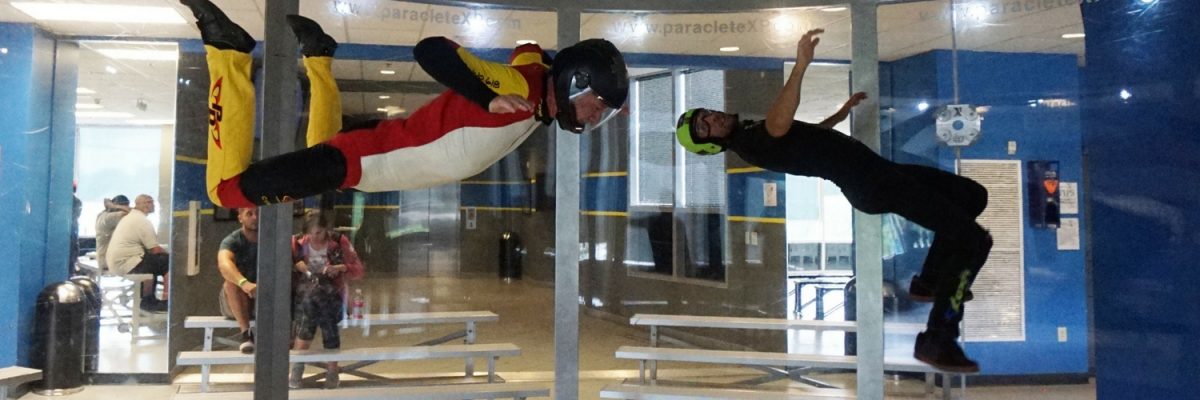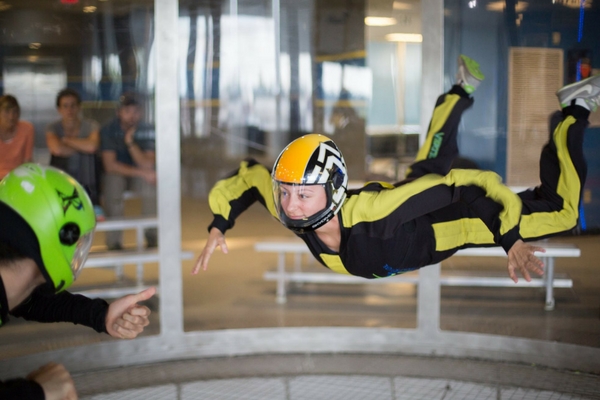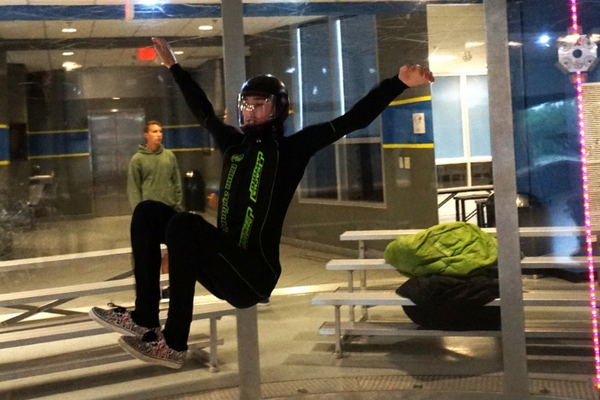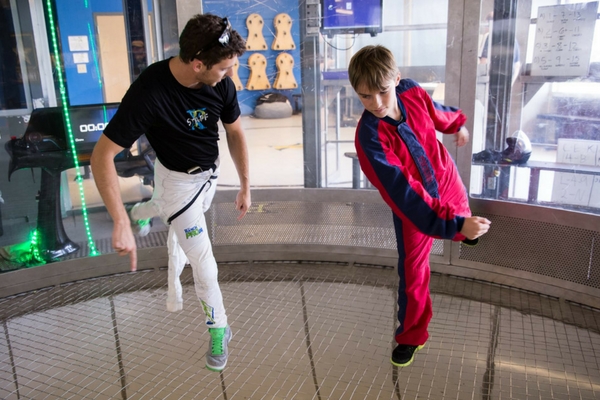
6 Insanely Helpful Fitness Tips for Indoor Skydiving
Tuesday, September 5, 2017
- Team XP
- 9/05/17
- 0
- Indoor Skydiving
At this point, the secret’s out and there’s no doubt about it–indoor skydiving is a serious sport! If you’re keen to hone your bodyflight skills to the point where you have a shot at the top of the international podium, make no mistake. You’re going to need to tune your instrument–your body–in order to get there. To help you in your quest, we’ve put together this helpful guide to get you on the best path forward.
1. Start Where You’re At.
If you’d never lifted weights in your life, you’d start doing so by lifting smaller weights; you’d only build up as you got stronger. It’s the same with flying! If you’ve never flown before, start by flying shorter, regular sessions, then build up incrementally as your capacity increases. Overflying early only tires you out and wastes precious minutes.
2. Strong Heart, Strong Bodyflight.
Tunnel flying is a cardiovascular pursuit–just look at the sweaty faces in those helmets when your fellow flyers are in for training! Training in the tunnel certainly taps into cardiovascular fitness, but it’s helpful not to go into the pursuit entirely cold. Working uphill sprints and high intensity interval training (HIIT) into your fitness plan can help you push out tough tunnel training with more ease and grace.

3. Work Strength And Flexibility At Once.
Tunnel flying has a long list of crossovers with yoga. It has often aptly been described, in fact, as “3-D floating yoga”–so it can only help to get into a studio and work those moves without an ever-fluid column of air pushing your poses off-course. Just as in yoga, a great tunnel flyer has to be strong in the core and move purposefully while moving to full extension of her flexibility in other parts of the body. A yogi can’t use either strength or flexibility alone to get through the moves; she has to balance the two. The same goes for the windytube.
How to access that? Integrate a three-times-weekly yoga practice into your tunnel training plan. You’ll be so glad you did.
4. Strength-train Your Brain.
The mental aspect of yoga is another big point of crossover. Both a yogi and a tunnel flyer have to mind-over-matter their way into a beautiful flow. All that physical strength and agility mean nothing if the practitioner isn’t calm in the mind. In the column of air, just like yoga: if you get unbalanced, you fall. Simple as that.
To tighten the moorings of your brain (and thereby fly more gracefully), commit to a daily meditation practice.

5. Think About Tempo.
There may not be any music in there, but–like dance–tunnel flying is a rhythmic pursuit. The timing and syncopation of each move count as important as the shape of the moves themselves. To help teach your body how that works, explore the idea of learning a form of earth-based dance–then take that sense of tempo to the tube.
6. Get Coaching!
If you want to see results, get a coach. Your coach can help measure your progress and give you small goals to pump up your progress to the bigger goals that await you–like national or international gold, baby. Great news–our coaches at Paraclete XP are the best in the world! Call us today and find out for yourself.


Everyone was extremely friendly,fun and helpful! We were from out of town drove three hours and were running late from bad weather we had a group of 10 and they called us to tell us to be careful in the weather and to take our time on arriving. Our instructor was amazing we had 3 three yr olds and he did an amazing job with all of them!
Google Review
Copyright © 2025, Paraclete XP Indoor Skydiving, All Rights Reserved.
DropZone Web Design & Marketing by Beyond Marketing, LLC